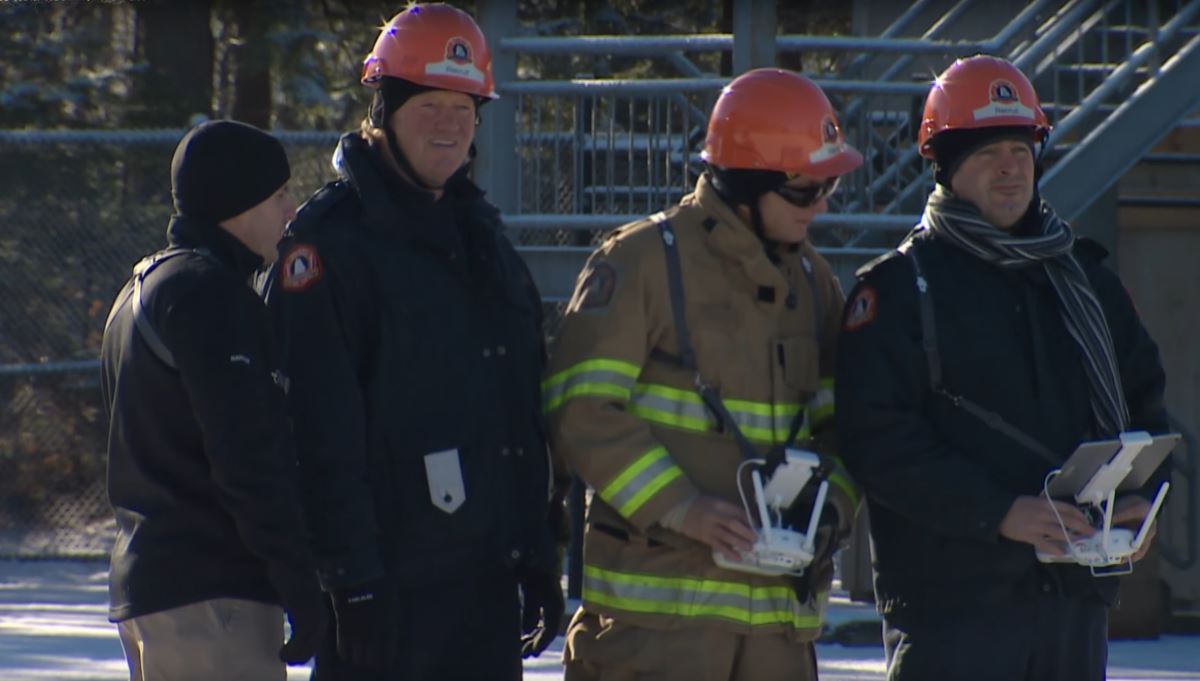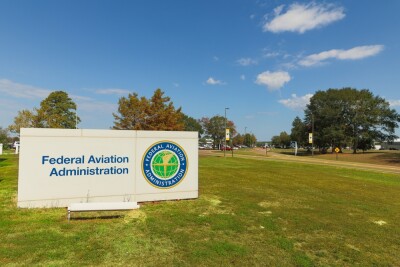Drones are becoming a necessary and invaluable tool in many industries, but the application of the technology has been especially relevant for Emergency Response departments, which are adopting UAVs to help save lives. One of Canada’s oldest fire departments, Halifax Regional Fire & Emergency, recently experienced the benefits and efficiencies of the technology for themselves.
Halifax Regional Fire & Emergency (HRFE) is the first municipal fire department in Atlantic Canada to get their hands on UAVs, adding two thermal imaging drones to their inventory. On December 9, HRFE had its first drone training, provided by Aerovision Canada, a UAV operator specializing in ultra-high definition aerial photography and videography for inspection, mapping, 3D modeling, thermal imaging and more. Twenty firefighters have been undergoing an intense, hands-on 5 day training.In an interview with Global News, District’s Captain Jim Sutherland said, “The Thermal imaging camera is one of the best tools we ever had at a fire, but all we have now are the ones who are handheld, so it will be very advantageous for us to have eyes in the sky to be able to predict fire spread”.Fighting fires is not the only thing the drones will be used for, as they will also help in surveying scenes, determining if buildings are structurally sound before sending in firefighters and identifying hotspots or unidentified products. Divisional Commander Chuck Bezanson told Global News: “We can actually send the drone in to identify the product and not a human. A couple of years ago, a container had a potential radiation leak – had that been a radiation leak, we may have had irradiated the human. With the drone we can go in and identify the product if it's that bad and it's irradiated, the drone is a disposable thing and a human isn't.”Safety and legality is everyone’s concern with drones, and HRFE made sure to be in line with it by obtaining approvals and certificates from the Canadian government, to proceed with the usage of drones. “We followed every standard the Canadian government has”, Bezanson continued. A big step forward was also the acquisition of the certificate to fly the drone at night, as firefighters use helicopters to assist them, but these are unusable during night time. “Our point of interest will be a burning building, a forest fire... That's the only place this will ever fly. Our altitude will be so low that no one will ever see us flying and any image capture of our flights will be from the actual scene,” Bezanson told CBC News. Both drones are certified to fly only at a maximum distance of 250m, and are already programmed not to fly near Halifax’s airport.Halifax’s Fire Department is not the first, and certainly won’t be the last, to try and implement the technology to work on a daily-basis. Not long ago, Lockheed Marin announced that for the first time, its suite of optionally-piloted helicopters and small unmanned aerial systems would work together for a firefighting and lifesaving demonstration. In the last half of 2016, veteran Gene Robinson along with Texas law enforcement officers designed and put on a two-day course for various state agency administrators. Additionally, the Nova Scotia Royal Canadian Mounted Police (RCMP) already had 5 drones, back in 2014, to fight crime and search missions.Even the International Fire Chiefs Association (IAFC), a worldwide network of more than 11,000 fire chiefs and emergency officers, has created “The Unmanned Aerial Systems (UAS) Toolkit”, a platform pointed at All-Hazards, All-Risk response leaders.Established in 1873, with its headquarters in Fairfax, Virginia, the IAFC provides leadership to current and future career, volunteer, fire-rescue and EMS chiefs, chief fire officers, company officers and managers of emergency service organization, through vision, information, education, services and representation to enhance their professionalism and capabilities. “The Unmanned Aerial Systems (UAS) Toolkit” was created to evaluate the current state of UAS policy, procedures, tactics and technology as they impact the fire and emergency service, and provide leadership and subject matter experts for fire and EMS departments interested in implementing a UAS program. There isn’t much information for now on the website, but it is a start of something bigger.All of this is proof of how the entire drone industry has been evolving since its first appearance, and doesn't seem to be stopping anytime soon. In the interview with CBC News, Bezanson said, “I truly believe drones will save lives,” while Sutherland mentioned that “this gives us a huge advantage”. Those advantages are just beginning to be explored and developed.HRFE is expected to have the drones in the air this month, in January 2017.Subscribe
The information you submit will be stored and used to communicate with you about your interest in Commercial UAV News. To understand more about how we use and store information, please refer to our privacy policy.
January 2, 2017
Halifax Regional Fire & Emergency Adopts Drone Technology to Help Save Lives
















Comments